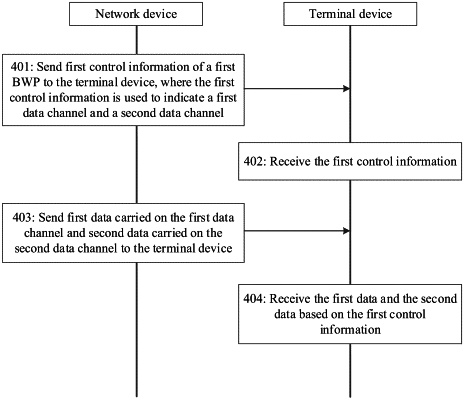| CPC H04W 72/23 (2023.01) [H04W 72/044 (2013.01)] | 16 Claims |

|
1. A communication method, wherein the method comprises:
receiving first control information of a first bandwidth part (BWP) from a network device, wherein the first control information indicates a first data channel and a second data channel;
receiving second control information of a second BWP from the network device, wherein the second control information indicates a third data channel;
receiving, from the network device based on the first control information, first data carried on the first data channel and second data carried on the second data channel, wherein the first BWP comprises a first frequency domain resource and a second frequency domain resource, the second BWP comprises a third frequency domain resource, and the third frequency domain resource and the second frequency domain resource overlap in frequency domain; and the first data channel is located on the first frequency domain resource, and the second data channel is located on the third frequency domain resource;
receiving indication information from the network device, wherein the indication information is used to indicate that a candidate time-frequency position of the first control information is the same as a candidate time-frequency position of the second control information of the second BWP; and
receiving the first control information and the second control information at the candidate time-frequency position of the first control information.
|